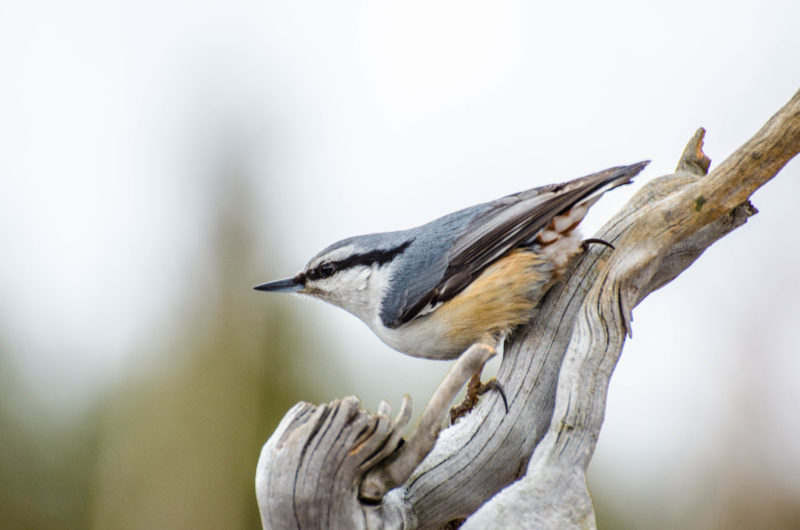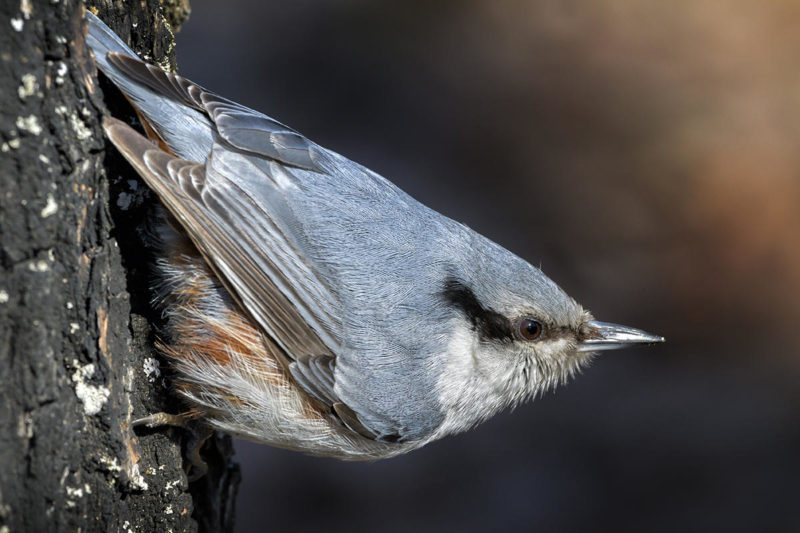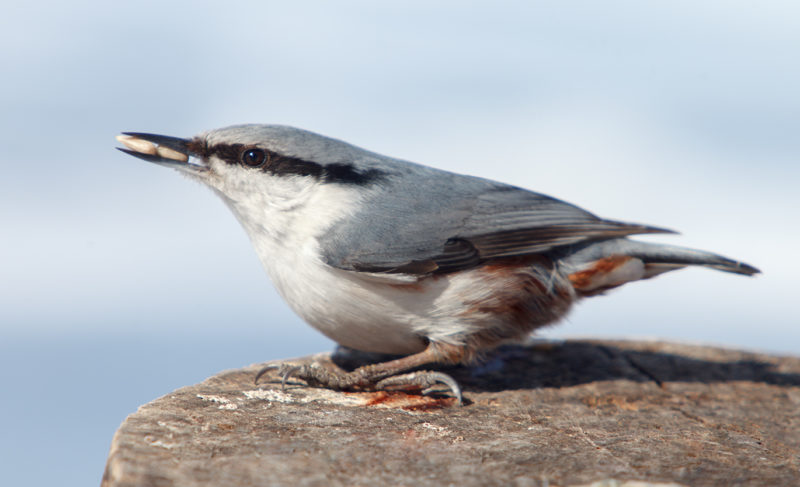A small bird is a skilled “climber” who quickly climbs tree trunks and sometimes storms heights with his head down. Common Nuthatch seeks insects in cracks in the bark and on leaves. With a strong sharp beak, the bird takes out larvae and seeds - its main food.
Material Content:
Description of Nuthatch
The elegant feathered belongs to the Nuthatch family. Body length - from 12 to 15 cm, weight - from 20 to 25 g. The head is relatively large with a very impressive pointed beak, the neck is thick and short. The Latin name of the species is Sitta europaea.
In Russia, this bird is also called "coachman", "blue woodpecker", in Germany - "woodpecker".
What does an ordinary nuthatch look like:
- The upper body is bluish-gray, the wings and tail are darker.
- An almost black stripe stretches from the base of the beak through the eyes to the back of the head, separating the upper gray-blue part of the head from the lighter cheeks and neck.
- The tail feathers are gray-brown with white spots.
- The abdomen is light beige, buffy or red.
- The legs are orange-yellow or brown.
Specialists in the description of individuals necessarily specify which subspecies in question. Ornithologists distinguish between 20-30 subspecies by color and habits, depending on the habitat.
In the European part of Russia and the Scandinavian countries, S. europaea europaea is found. The plumage on the sides of the body is beige, the chest is whitish. The subspecies S. europaea caesia is widespread in Central Europe. The abdomen is beige, in males - with reddish-brown sides. S. europaea asiatica lives in the east of Russia, in Siberia. The back is blue-gray, the upper part of the head and lower body are whitish. The body of the bird is slimmer and the beak is thinner than that of European relatives.
Differences between females and males
Nuthatch - a bird with a slightly pronounced sexual dimorphism. The female is slimmer than the male. The body dimensions of the male are slightly larger. The dark “mask” on the head is better visible, the plumage of the abdomen is bright chestnut in color. Young individuals are the same color as adults, but more dull.
Character, lifestyle and habitat
Common Nuthatch - a settled bird, spending most of his life on trees. The shape of the body, the structure of the legs and tail are well adapted for climbing trunks and branches. They differ from a woodpecker not only by their small body size, but also by the color of their feathers.
The bird “walks” on the tree in different directions, rearranging its legs and clutching its bark tightly with its claws. If necessary, quickly runs along the trunks and branches upside down, support the trunk on a vertical surface with the help of the tail, cling to both legs at the same time.
Common Nuthatch bird is hardly visible on the trunk or branch of a tree. Usually she gives a loud voice, consisting of energetic whistles and other sounds. It is most likely to hear a nuthatch at the end of winter and with the onset of spring. By the time the eggs are hatched, the singing subsides.
Their repertoire is very extensive, one of the songs sounds like “tzi-it”, which is very similar to the cry of a coachman chasing horses.
Nuthatch sings in the daytime. The bird makes short sharp sounds, "tew-tew" when looking for food. Even in the aria of the nuthatch, there are beautiful iridescent trills “tyu-tyu-tyu”, sharp “tweet-tweet” or “zit” (“sit”), reminiscent of a doorbell. Sometimes such tunes are replaced by twittering. Usually a bird makes sounds, sitting high in the trees, on thick branches.
The typical habitat of most subspecies is broad-leaved and mixed forests, in which there are many old trees with hollows. Nuthatch often fly alone, sometimes in pairs. In search of feed appear in large gardens and parks.
Bird feed
The nuthatch diet consists of plant and animal food. It feeds on seeds, berries, nuts. The bird finds animal food mainly in cracks of a bark and on leaves of trees. These are insects, their larvae, spiders. Parents feed the chicks with caterpillars, butterflies, bugs, flies.
In the cold season, plant foods predominate in the diet of birds.
Nuthatch pecks seeds from cones, breaks nuts and acorns with its beak. The bird is famous for its thrifty nature, for which it successfully hides seeds and grains in crevices on trunks and branches, disguises bark and moss from above. "Walking" through the trees in their forage territory, birds find numerous reserves created. In winter, the nuthatch visits the feeders, which are hung in gardens and parks, eagerly eats sunflower seeds.
If the bird is kept in an aviary, then it is necessary for her to put a piece of branch thicker or a block of wood with a bark. Nuthatch quickly gets used to the person, pecks food from the hand. They give not only grain, but also flour worms.
Reproduction and longevity
The monogamous creeps - the male creates a pair with one female and is faithful to her until the end of days. Individuals reach puberty in the first year of life. The beginning of the breeding season in various parts of the range occurs in March in Europe, April in central Russia, and May in the northeastern regions. Nuthatch females build nests in old hollows or indentations in tree trunks; birdhouses can occupy them.
Each bird adapts the selected place to its size. A wide hole is covered with clay mixed with saliva, leaving a hole with a diameter of only 3.5 cm. And it also equips the inside of the hollow: it covers with pieces of bark, wood dust, animal hair, moss, grass and feathers.
After the construction of the dwelling, the female lays in April-May from 5 to 9 eggs of milky white color with brownish spots. Breeding of young animals lasts about 24 days. Chicks fly out in early June, as a rule, settle in a territory within a radius of several kilometers from their parents.
Life expectancy of birds of this species in nature is from 2 to 7 years.In captivity, with good maintenance, they reach the age of 11 years.
Natural Nuthatch Enemies
Marten, owls and hawks hunt adult birds of this species. These same natural enemies raid nests with egg-laying and chicks. Squirrels, owls, crows and jays are dangerous for young animals. Nuthatch with clay narrow the hole in the hollow and carefully mask it. The natural trick of a small bird helps save offspring from enemies.
















